#Arkus Duntov
Explore tagged Tumblr posts
Text

𝟏𝟗𝟔𝟑 𝐂𝐡𝐞𝐯𝐫𝐨𝐥𝐞𝐭 𝐂𝐨𝐫𝐯𝐞𝐭𝐭𝐞 𝐙𝟎𝟔

𝟏𝟗𝟔𝟑 𝐂𝐡𝐞𝐯𝐫𝐨𝐥𝐞𝐭 𝐂𝐨𝐫𝐯𝐞𝐭𝐭𝐞 𝐙𝟎𝟔

𝟏𝟗𝟔𝟑 𝐂𝐡𝐞𝐯𝐫𝐨𝐥𝐞𝐭 𝐂𝐨𝐫𝐯𝐞𝐭𝐭𝐞 𝐙𝟎𝟔

𝟏𝟗𝟔𝟑 𝐂𝐡𝐞𝐯𝐫𝐨𝐥𝐞𝐭 𝐂𝐨𝐫𝐯𝐞𝐭𝐭𝐞 𝐙𝟎𝟔
𝐏𝐞𝐫𝐟𝐞𝐜𝐭𝐥𝐲 𝐑𝐞𝐬𝐭𝐨𝐫𝐞𝐝 𝟏𝟗𝟔𝟑 𝐂𝐡𝐞𝐯𝐫𝐨𝐥𝐞𝐭 𝐂𝐨𝐫𝐯𝐞𝐭𝐭𝐞 𝐙𝟎𝟔 𝐇𝐢𝐝𝐞𝐬 𝐚 𝐒𝐮𝐩𝐞𝐫-𝐑𝐚𝐫𝐞 𝐅𝐞𝐚𝐭𝐮𝐫𝐞
Produced from 1962 to 1967, the Chevrolet Corvette C2 stands out as the shortest-lived generation of the iconic sports car. But that's not the only feat that sets it apart from the rest.
It's also regarded as the most beautiful Corvette ever made by many enthusiasts and is famous for its first-year (1963) split rear window. The C2 also spawned a couple of extremely rare iterations, starting with the Grand Sport.
Developed by Zora Arkus-Duntov, the Grand Sport was developed as a lightweight race car aimed at the Shelby Cobra. The secret program was canceled as soon as GM executives found out about it and only five cars were built. Come 2022 and the Grand Sport is one of the most coveted and valuable Corvettes ever built.
Then there's the Z06, a higher-performance variant of the C2. Much like the Grand Sport, the Z06 was also conceived by Duntov against GM's ongoing support of the AMA ban on factory racing involvement. Aimed at competition-minded customers, the Z06 was a bundle of performance upgrades that included a larger front anti-roll bar, vacuum brake booster, cooled brakes, and a stiffer suspension.
The package also included a bigger 36.5-gallon (138-liter) gas tank that replaced the regular 20-gallon (76-liter) unit. Added for longer endurance races at Daytona and Sebring, the oversized tank was discontinued shortly after its introduction. Of the 199 Z06s sold in 1963, only the first 63 cars got one.
There's no precise info as to how many survived, but these C2 "Big Tanks" are extremely hard to come by. And they're also inconspicuous, so they're also tough to spot at car shows. Except for the white example you see here, which boasts a race-inspired livery.
Showcased at the 2022 Muscle Car and Corvette Nationals (MCACN), this first-year Z06 "Tanker" is one of the very few examples of years of hard racing. Yes, it was restored to its original specifications a few years ago, but it's still highly original and has an authentic oversized tank to brag about.
In addition, it still relies on its 327-cubic-inch (5.4-liter) L84 "Fuelie" V8 and sports a fabulous leather interior in gold. And here's another thing that makes it more valuable than the "regular" 1963 Z06: this car was driven by A.J. Foyt for a few practice laps at Laguna Seca. And, of course, because it's a 1963 Corvette, it also has the desirable rear split window.
#𝐂𝐡𝐞𝐯𝐫𝐨𝐥𝐞𝐭 𝐂𝐨𝐫𝐯𝐞𝐭𝐭𝐞 𝐙𝟎𝟔#𝐂𝐡𝐞𝐯𝐫𝐨𝐥𝐞𝐭 𝐂𝐨𝐫𝐯𝐞𝐭𝐭𝐞#𝐂𝐡𝐞𝐯𝐫𝐨𝐥𝐞𝐭#𝐂𝐨𝐫𝐯𝐞𝐭𝐭𝐞#𝐂𝐨𝐫𝐯𝐞𝐭𝐭𝐞 𝐙𝟎𝟔#𝐙𝟎𝟔#car#cars#muscle car#american muscle#Zora Arkus-Duntov#Arkus-Duntov#Arkus Duntov
61 notes
·
View notes
Text






Chevrolet Corvette SS Project XP-64, 1957. A one-off Corvette experimental race car is to be offered at auction by R M Sotheby's in February. The car was the personal project of the Zora Arkus-Duntov who built it from the ground up as an exercise in lightweight construction and aerodynamics. It is powered by a Chevrolet 283ci V8 with Ramjet fuel injection and alloy heads. The auction estimate is $5-$7 million.
auction listing
#Chevrolet#Chevrolet Corvette SS#Chevrolet Corvette SS Project XP-64#Project XP-64#Corvette XP-64#XP-64#one-off#race car#experimental car#1957#cars for sale#auction#R M Sotheby's#Zora Arkus-Duntov#lightweight#aerodynamic#V8#fuel injection
157 notes
·
View notes
Photo

Chevrolet Corvette Duntov Turbo Convertible 1980. - source CorvSport - Corvette Obsessed.
62 notes
·
View notes
Text
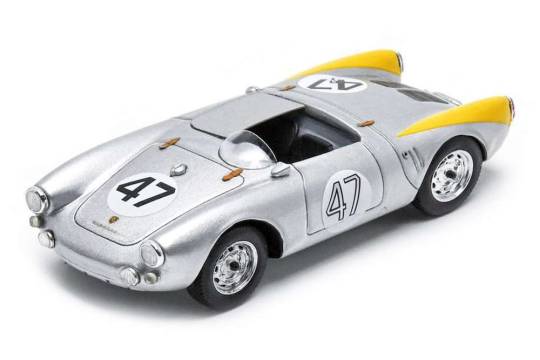
Spark Model S9707 Porsche 550 #47 'Zora Arkus Duntov - Gonzague Olivier' 14th pl Le Mans 1954
0 notes
Text

The Zora Arkus-Duntov 327 HEMI Prototype: The Corvette Engine That Could Have Been
In the 1960s, Zora Arkus-Duntov, the legendary "Father of the Corvette," envisioned pushing the limits of Chevrolet’s small-block V8 engine. One of his most fascinating experiments was the creation of the 327 HEMI prototype engine—a high-revving powerhouse that showcased his innovative spirit and commitment to performance.
-A Revolutionary Design-
The prototype was based on Chevrolet's already impressive 327 cubic inch small-block V8, but with a twist: hemispherical combustion chambers. Inspired by Chrysler's success with their HEMI engines, Duntov sought to combine the HEMI head’s efficiency and power potential with the compact and lightweight Chevy small-block.
The result was a hybrid of sorts, using aluminum hemispherical heads designed by Duntov himself. This setup promised better airflow and higher compression ratios, which could dramatically increase power output while maintaining reliability.
-Impressive Performance on Paper-
The 327 HEMI prototype was never officially rated, but engineers believed it could produce well over 400 horsepower with the right tuning. This would have made it a serious contender in the high-performance world of the mid-1960s, potentially rivaling engines like Chrysler's 426 HEMI and Ford’s 427 SOHC.
-Why It Didn’t Make Production-
Despite its potential, the 327 HEMI was never mass-produced. The primary reason was cost. The complex hemispherical head design was more expensive to manufacture compared to traditional small-block heads, and Chevrolet wasn’t ready to invest in such an ambitious project at the time. Additionally, General Motors’ corporate policy in the mid-1960s limited engine displacement and horsepower for regular production vehicles, which further constrained the engine’s development.
-A Legacy of Innovation-
Though it never made it to the production line, the 327 HEMI prototype was a testament to Duntov’s unrelenting pursuit of performance. His willingness to push boundaries and experiment with unconventional ideas laid the groundwork for the Corvette’s evolution into a world-class sports car.
-A Rare Piece of History-
Today, the 327 HEMI prototype is a fascinating footnote in Chevrolet and Corvette history. It’s a reminder of a time when engineers like Duntov were given the freedom to dream big and explore the limits of what was possible in American performance engineering.
#ZoraArkusDuntov#327HEMI#CorvetteHistory#ChevySmallBlock#AutomotiveInnovation
The Zora Arkus-Duntov 327 HEMI prototype may have been a "what if," but its story embodies the bold creativity that defined the golden age of American muscle and performance. It’s a piece of automotive history that will always fuel the imagination of car enthusiasts.
3 notes
·
View notes
Text
1969 Chevrolet Corvette Coupe L88
The L88 was a special option package developed under the direction of Zora Arkus-Duntov, director of GM’s performance division. First introduced in 1967, the L88 Corvette featured a highly modified version of Chevy’s 427-cubic-inch V-8 engine. Although this engine received a factory horsepower rating of 435, actual engine output was somewhere between 540 and 580 horsepower, giving the “stock”…

View On WordPress
0 notes
Text
1973 Corvette Concept Powered by a Mid-Mounted Four-Rotor Engine.Known as the Wankel engine, after its German inventor Felix Wankel, the rotary is a pistonless powerplant that has gained a cult following among car fanatics thanks to Mazda and its successful versions.Famed Corvette engineer Zora Arkus-Duntov absolutely did not want to do the Wankel-rotary-engine-powered Four-Rotor Corvette project, which itself was an evolution of the mid-engine XP-882 prototype. With his retirement looming, the window of opportunity for a mid-engine Corvette was narrowing. Familiar with the Wankel engine since 1955, Duntov knew that the basic design was inefficient because of the surface-to-volume ratio in the combustion chamber. Additionally, the Chevy Vega was scheduled to be the first Wankel-powered car produced by General Motors and Duntov didn't want the Corvette to be powered by a Vega engine. But GM president at the time Ed Cole was hot on the Wankel and tactically said, "yes" to the mid-engine Corvette, but only with a Wankel in the middle. Duntov had no choice.Duntov made the best of it and told his engine man, Gib Hufstader, "Make me a fast car!" Hufstader's solution later won a U.S. patent. The layout consisted of two separate Wankel engines, one on each side of a shaft that ran back to the bevels at the transmission output. Each engine was 90 degrees out of phase to smooth out the performance. A toothed and grooved cog belt ran the ignition, alternator, and fuel pump, while a V-belt controlled the air conditioning, power steering, and water pump. The combined size of the two engines was 585 cubic inches and was rated at 350 to 370 horsepower. Hufstader said with some development the setup could make as much as 480 horsepower. He pulled it all together in just two months. In July of 1972, Cole, with Duntov, took the completed, body-less car out on the GM Tech Center check road. Legend has it that the car hit 148 mph and was still accelerating when they had to slow down. The sound was described as an "incredible shriek!"As development continued, Duntov eventually cornered GM vice president of design Bill Mitchell and said, "Let's put a deadline on this. The Paris show." Mitchell agreed and assigned the project to Hank Haga and Jerry Palmer. Mitchell wanted to see a break from the Kammback design, something pointed and streamlined, similar in flavor to the Mercedes-Benz record-breakers of the 1930s. Palmer recalled: "It was a very hard car to design. After my second shot Mitchell said, 'Hey, look, this is like baseball, kid—three strikes and you're out.' ""Mitchell wanted a teardrop shape," Haga explained. "The design problem was to put together a piece of equipment that didn't have a tail 40 feet long. It started with a long nose and tail … it looked like a record car rather than a Corvette. So we did several overlays and got a fair balance between the nose and tail. We kept shortening it and that's how it evolved."With the basic shape set, everyone in the design group fell in love with the car. With a 72-degree windshield slope, wheel flares, and vents behind the rear glass, the coefficient of drag was 0.325—astonishing for its day. Other details included side cooling intakes for the engine; bifold gullwing doors; and a deep, V-angled front windshield. Chevrolet Interiors created the cabin with plush leather and suede seats, a digital smoked-black instrument display that pivoted along with the telescopic and tilt steering wheel. The center console had more digital gauges, plus the warning lights, radio, climate controls, transmission selector, and handbrake.Both the Two-Rotor (a.k.a. The XP-987 GT) and Four-Rotor Corvettes started making the rounds of the auto-show circuit beginning with 1973 Paris show, to mixed reviews. Automotive magazines went crazy with speculation, but the project stalled when Cole decided to scrap GM's Wankel project altogether. As a result, the Fur-Rotor was never properly developed and didn't run well. Flat out it was a monster; at any other speed, not so good. Designers tried to take the body design and make it a producible car, but every production issue solved detracted from the beauty of the original. "Death by a thousand cuts," said Palmer.Eventually, Bill Mitchell had the Four-Rotor sent to the Design Center to be retrofitted with the all-aluminum XP-895’s drivetrain and a 400-cubic-inch small-block. The new Aerovette was relegated to show-car duty. Chief Engineer Dave McLellan said, "Showing the Aerovette was a sign of what wouldn't be produced." If not for the Wankel distraction, this might have been the first production mid-engine Corvette. Duntov later said that the car was equal with the 1957 Corvette SS as his favorite one-off Corvette. When Zora retired, he was given a detailed model of the Four-Rotor, while former head of GM design Ed Welburn said that he and his coworkers used to look at the car on their lunch breaks. "I knew every inch of it, and I didn't even work on it." Now that's inspiration!Despite its unfortunate fate, the 1973 Four Rotor concept was a captivating car that was born in the wrong era. One can't help but wonder what a thoroughly developed version would have looked like and how it would have performed if it had been built ten or twenty years later.
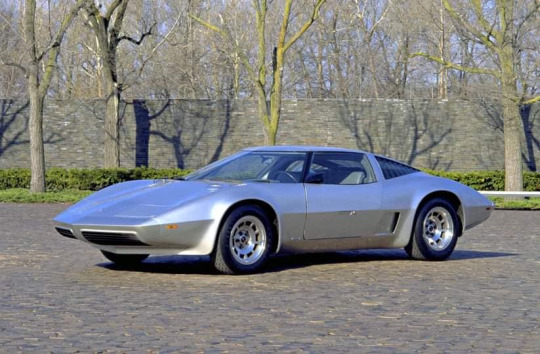
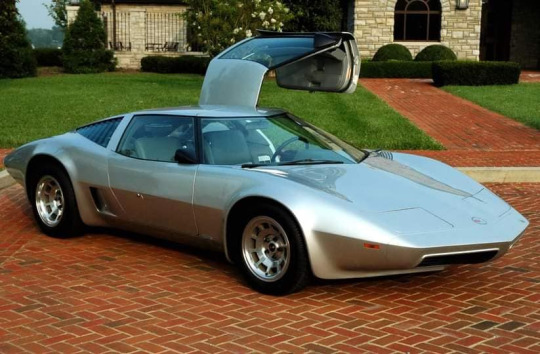
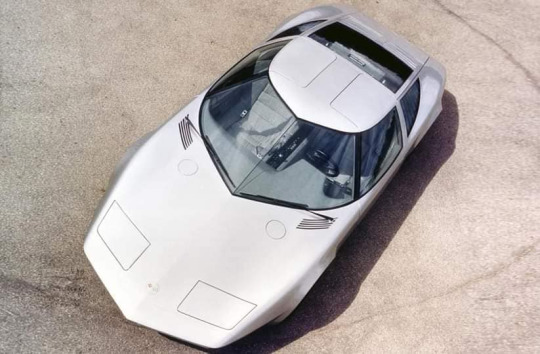


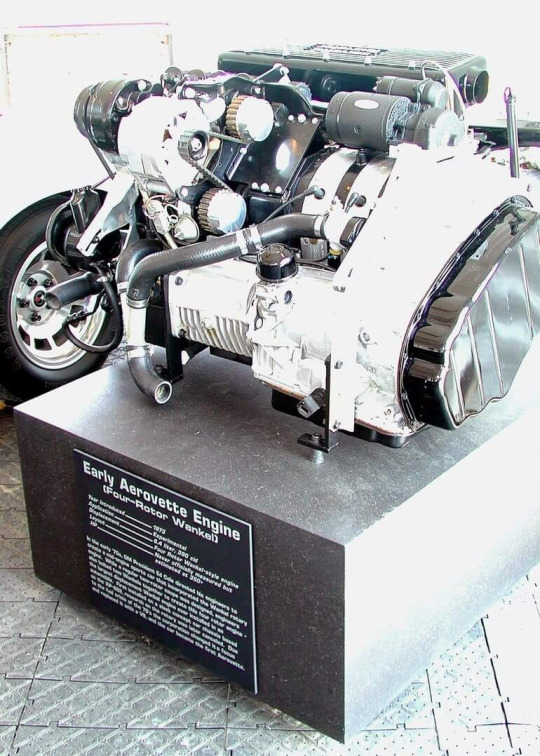
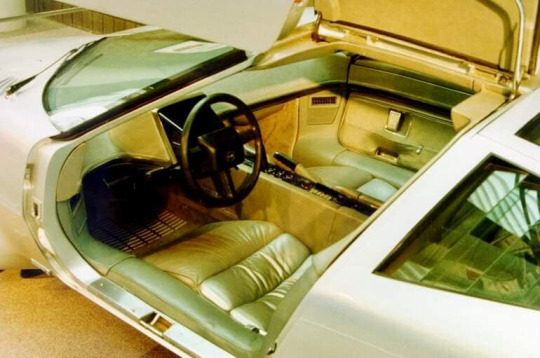



0 notes
Text
A Rare Allard J2: The Unusual British-American Sports Car That Became A Legend
The Allard J2 is a car that deserves to be a lot more famous than it is, J2s were raced by Zora Arkus-Duntov and Carroll Shelby in the early 1950s – strongly influencing the pair who went on to become the father of the Corvette and the father of the Shelby Cobra respectively. The recipe that went into making the Allard J2 proved almost unbeatable – a lightweight British chassis with good handling…

View On WordPress
1 note
·
View note
Text
What’s an ARDUN? The Ultimate OHV Conversion for the Ford Flathead V-8 - Mike Herman of H&H Flatheads @TorqTalk
What’s an ARDUN? The Ultimate OHV Conversion for the Ford Flathead V-8 – Mike Herman of H&H Flatheads @TorqTalk
As we learned in our flathead Ford V8 story here: www.torqtalk.com/home/ford-flathead-the-first-performance-v-8, the Ford V8 was not initially a performer. Out of the crate in 1932 the 221 ci produced only 65 bhp and even by the end of its life in 1953 the 239 ci ‘flattie’ only produced 110. Note: The ’53 255 ci Mercury did make 125 bhp—still no big deal. To make the Model A/B four bangers go…

View On WordPress
#Ardun#Flathead Ford#Flathead V8#H&H Flatheads#Mike Herman#The Ultimate OHV Conversion for the Ford Flathead#TorqTalk#Zora Arkus Duntov
1 note
·
View note
Text

This Day In History, April 23, 1996 Zora Arkus-Duntov, Belgian-American automotive engineer, known as "the Father of the Corvette", dies at 86
Zora Arkus-Duntov (December 25, 1909 – April 21, 1996) was a Belgian-born American engineer whose work on the Chevrolet Corvette earned him the nickname "Father of the Corvette." He is sometimes erroneously referred to as the inventor of the Corvette; that title belongs to Harley Earl. He was also a professional racing driver, appearing at the 24 Hours of Le Mans four times and taking class wins in 1954 and 1955.
Arkus-Duntov joined General Motors in 1953 after seeing the Motorama Corvette on display in New York City. He found the car visually superb, but was disappointed with what was underneath. He wrote Chevrolet chief engineer Ed Cole that it would be a pleasure to work on such a beautiful car; he also included a technical paper which proposed an analytical method of determining a car's top speed. Chevrolet was so impressed, engineer Maurice Olley invited him to come to Detroit. On May 1, 1953, Arkus-Duntov started at Chevrolet as an assistant staff engineer.
Shortly after going to work for Chevrolet, Arkus-Duntov set the tone for what he was about to accomplish in a memo to his bosses. The document, "Thoughts Pertaining to Youth, Hot Rodders and Chevrolet", laid out Duntov's views on overcoming Ford's lead in use by customizers and racers, and how to increase both the acceptance and the likelihood of success of the Chevrolet V8 in this market. In 1957 Arkus-Duntov became Director of High Performance Vehicles at Chevrolet. After helping to introduce the small-block V8 engine to the Corvette in 1955, providing the car with much-needed power, he set about showcasing the engine by ascending Pike's Peak in 1956 in a pre-production car (a 1956 Bel Air 4-door hardtop), setting a stock car record. He took a Corvette to Daytona Beach the same year and hit a record-setting 150 mph (240 km/h) over the flying mile.[citation needed] He also developed the famous Duntov high-lift camshaft and helped bring fuel injection to the Corvette in 1957. He is credited with introducing the first mass-produced American car with four-wheel disc brakes.
A conflict arose between Duntov and Chevrolet chief designer Bill Mitchell over the design of the new C2 Corvette "Sting Ray" model. Mitchell designed the car with a long hood and a raised windsplit that ran the length of the roof and continued down the back on a pillar that bisected the rear window into right and left halves. Duntov felt that the elongated hood interfered with the driver's view of the road ahead, and the rear pillar obscured the driver's view rearwards. The split rear window was widely criticized, and a one-piece backlite was put in its place the next year.
#Zora Arkus-Duntov#Arkus-Duntov#car#cars#muscle car#american muscle#chevrolet#chevy#chevrolet corvette#corvette
114 notes
·
View notes
Text
It’s interesting, Chevrolet says that ZR doesn’t stand for anything, but it’s long been believed that it stands for “Zora Racer” after the chief engineer of the Corvette line in the 60’s and 70’s, and race-car driver, Zora Arkus-Duntov, who was heavily involved in the Corvette racing program in the pre-moratorium era.
It’s interesting to note that Arkus-Duntov championed the idea of a rear engine Corvette for the rest of his working life, an idea which finally made it out of the one-off concept car stage to a production car with this generation.
But still, I dunno, I could stand for the styling to be a little more… corvette-like.






What a difference 54 years makes juxtaposition of Chevrolet Corvette Stingray ZR-2 Convertible, 1971 & Chevrolet Corvette ZR1 Convertible, 2025. The C3 Corvette was the first to be offered with ZR1/ZR2 packages. The ZR1 could be ordered with the LT-1 engine and included a solid-lifter small-block engine, heavy-duty four-speed transmission, power brakes, aluminum radiator, and a revised suspension with special springs, shocks, stabilizer bar, and spindle-strut shafts. The ZR2 included the special equipment in the ZR1 package, but for the 454 LS-6 engine. The new ZR1 features turbochargers for the first time ever on a factory Corvette
275 notes
·
View notes
Photo

Corvette Duntov Turbo Convertible 1980. - source CorvSport - Corvette Obsessed.
61 notes
·
View notes
Video
youtube
The Corvette, Reflections of the Stylemakers - still remains one of America's finest sports cars
Throughout this video, You will know about the history of the Chevy Corvette and the men who designed it. The man behind the Chevrolet Corvette was Harley J. Earl. He started his career working for his father's business, Earl Automotive Works, designing custom automobile bodies for movie stars. General Motors brought him aboard in the mid-1920s to design the LaSalle.
The National Corvette Museum promotes, "Harley Earl is the father of the Corvette. The Corvette was his idea pure and simple." With over 60-plus years in the making, the Corvette has grown into a phenomenal brand and has a unique and amazing history all its own.
#Chevrolet#Corvette#Harley Earl#Ed Cole#American Sports Car#Zora Arkus-Duntov#GM Design#Stingray#Chevy Corvette#The Corvette#Reflections of the Stylemakers#America's finest sports cars#sports cars#national corvette museum#chevrolet corvette (automobile model)#performance sports cars#sports car (body style)#british sports cars#section transport (cars)
2 notes
·
View notes
Photo

Zora and the CERV1... Pikes Peak
50 notes
·
View notes

